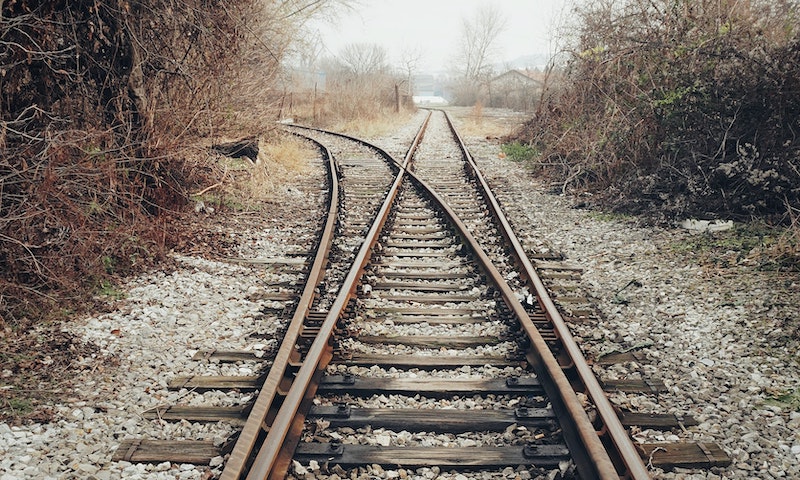Connecting with community resources is essential for anyone in recovery—especially those who have traveled away from home for treatment and are returning
This post is reprinted with permission from one of TreatmentMagazine.com’s go-to blogs about addiction, treatment and recovery: Recovery Review.
By David McCartney
Recovery journeys are rarely linear, generally bumpy and often happen over many years. Treatment may or may not be part of the process. People can need several different treatment episodes over time, often re-presenting with different needs and goals.
Despite a growing evidence base, only a small percentage of treatment episodes take place in residential rehabilitation settings. Access is not easy. In many areas, to get to rehab you need to be wealthy, insured or just plain lucky. If you have the wrong post code and no funds, you may never get there.
If you are fortunate enough to find your way to rehab, you are less likely to reach your goals if you don’t get sufficient time in treatment and if the intensity and content are not robust. Evidence suggests that to get the most gains, treatment should last at least three months.
Any aftercare provided by rehab should be strongly focused on helping individuals develop their own support systems and connecting them to services that will help in the longer term.
One thing that predicts positive outcomes is the quality of what happens after rehab. If recovery journeys happen over years, it makes no sense to put most of the energy into the residential treatment episode at the expense of aftercare. Any aftercare provided by rehab should be strongly focused on helping individuals develop their own support systems and connecting them to services that will help in the longer term—and by longer term, I mean the rest of their recovery. Yet this area of ongoing support is something that is not always as well-developed or as valued as highly as it might be.
The Scottish Government’s Good Practice Guide on residential rehab pathways recognizes this: “Residential detoxification and rehabilitation programs should not be seen as standalone interventions, but rather as components of an integrated package of care. Adequate preparation and aftercare provided in community settings are key to the success of residential treatments.”
Recently, Professor David Best, writing in his blog, picks up this topic in an insightful way. He emphasizes the importance of making new links to community recovery resources like mutual aid and lived-experience recovery organizations, which can then generate new, protective social networks. He points out that to do this we need to build effective bridges from treatment to such organizations. Further, nonspecific resources (like clubs, colleges and classes) should also be seen as rich materials with which to build recovery capital.
One challenge with realizing this is what Prof. Best calls the “house on the hill” model of rehab. This is the traditional setup where the person is taken away from their environment to treatment in a distant facility. Some people remain in the area where the rehab is situated. Others will return home after treatment.
While good practice exists, there is still a lot of room for development of a joined-up system of care that puts as much effort into what happens after treatment as what happens during it.
While there are positives to out-of-area placements, one potential disadvantage is that if the person does return to where they came from at the end of treatment, the capacity of the rehab and of local recovery resources to support them may be limited (though digital developments can help). Rich local connections that may have been generated and developed during treatment are not going to help someone who is leaving the area to go home. As Prof. Best puts it, “The challenge remains that, for many people, the departure from a residential rehab is one from high social recovery capital within the rehab to low or negative social capital, particularly if they’re returning to areas where most of the available network involves people who are still using.”
There are examples where local initiatives are overcoming these obstacles (e.g., rehabs that focus on local populations, or where community service supports individuals before and after the rehab placement, making those connections actively). While good practice exists, there is still a lot of room for development of a joined-up system of care that puts as much effort into what happens after treatment as what happens during it. This is not only a problem for rehabs, but also an issue for officials who are allocating funding for distal placements.
Prof. Best sets out three measurable conditions to test the benefit of out-of-area placements:
- Only commissioning residential treatment providers who have a strategy for engaging community capital in their later stages of treatment
- Building effective bridges from the recovery residence to local community recovery resources for those returning
- Having an adequate set of recovery resources available and accessible in your area to sustain and further build the recovery capital gains achieved in residential treatment
There is little to disagree with here and so much to endorse. From what I know of rehab providers, I think most, if not all, are switched on to the value of active connections to community resources. The tricky thing is to become aware of and develop links to multiple organizations across a wide geographical area. Perhaps reciprocal arrangements could be developed. The service I work in, for instance, offers aftercare to patients returning from out-of-area rehabs.
A person in recovery acts as a beacon of hope, a role model and a bridge for those seeking recovery. When recovering people are not available to their own communities, something very important is squandered.
There is a further issue with the relocation of out-of-area rehab clients. Each time this happens, we are losing a huge asset to communities in home towns and cities. A person in recovery acts as a beacon of hope, a role model and a bridge for those seeking recovery. When recovering people are not available to their own communities, something very important is squandered.
In the situation where individuals are going to return home from an out-of-area rehab, agencies and providers will want to ensure that robust connections are made during treatment, and that afterward these supports continue. Auditing uptake and engagement of local resources in the short and medium term ought to be simple to do and could be reported as quality measures—something that is almost certain to improve outcomes for those going through rehab.
David McCartney is an addiction medicine specialist and clinical lead at LEAP, a quasi-residential therapeutic community addiction treatment program in Scotland. He is a member of the Royal College of General Practitioners. Find more of his writing, as well as a thought-provoking range of articles, insights and expert opinions on treatment and addiction, at Recovery Review.
Top photo: Sixteen Miles Out














